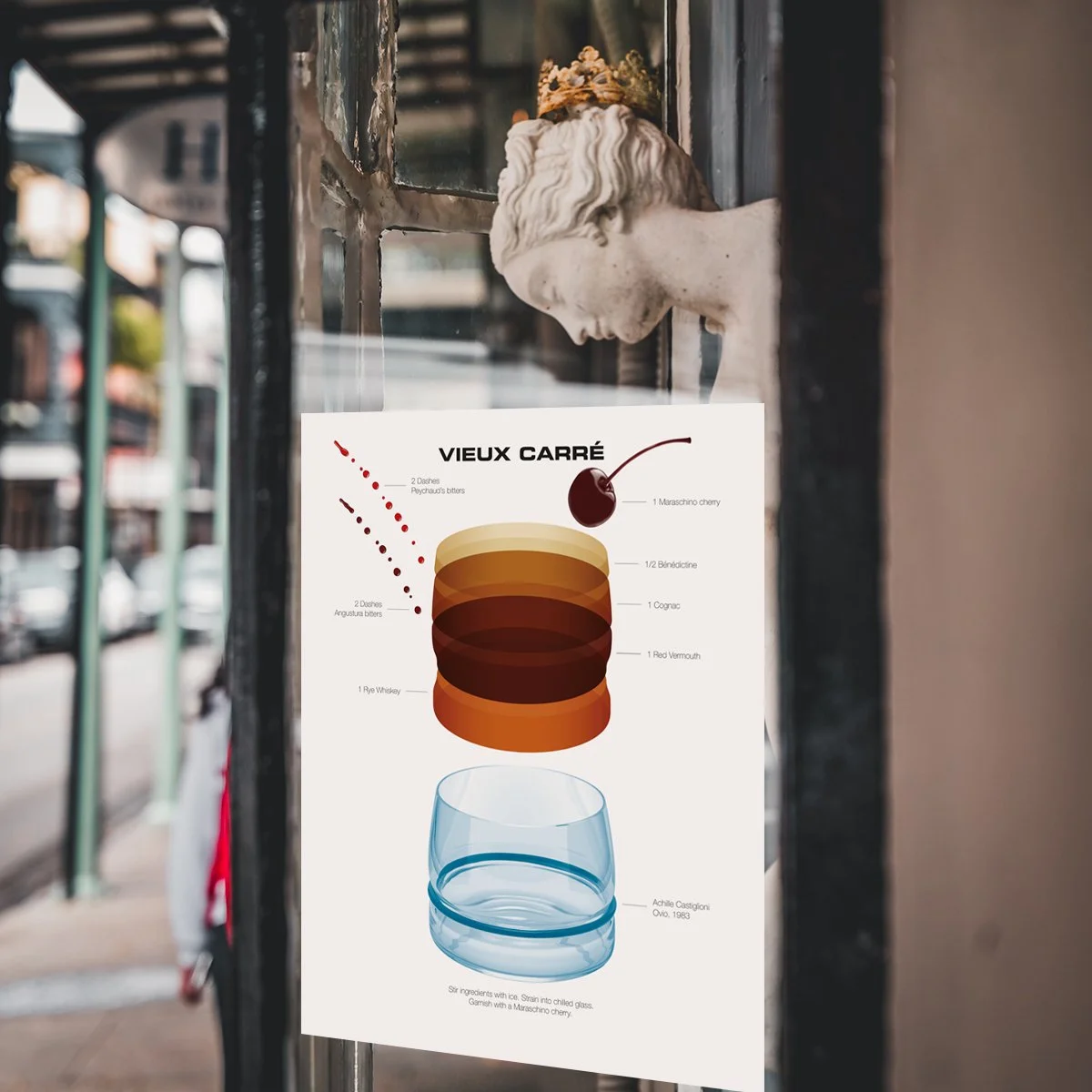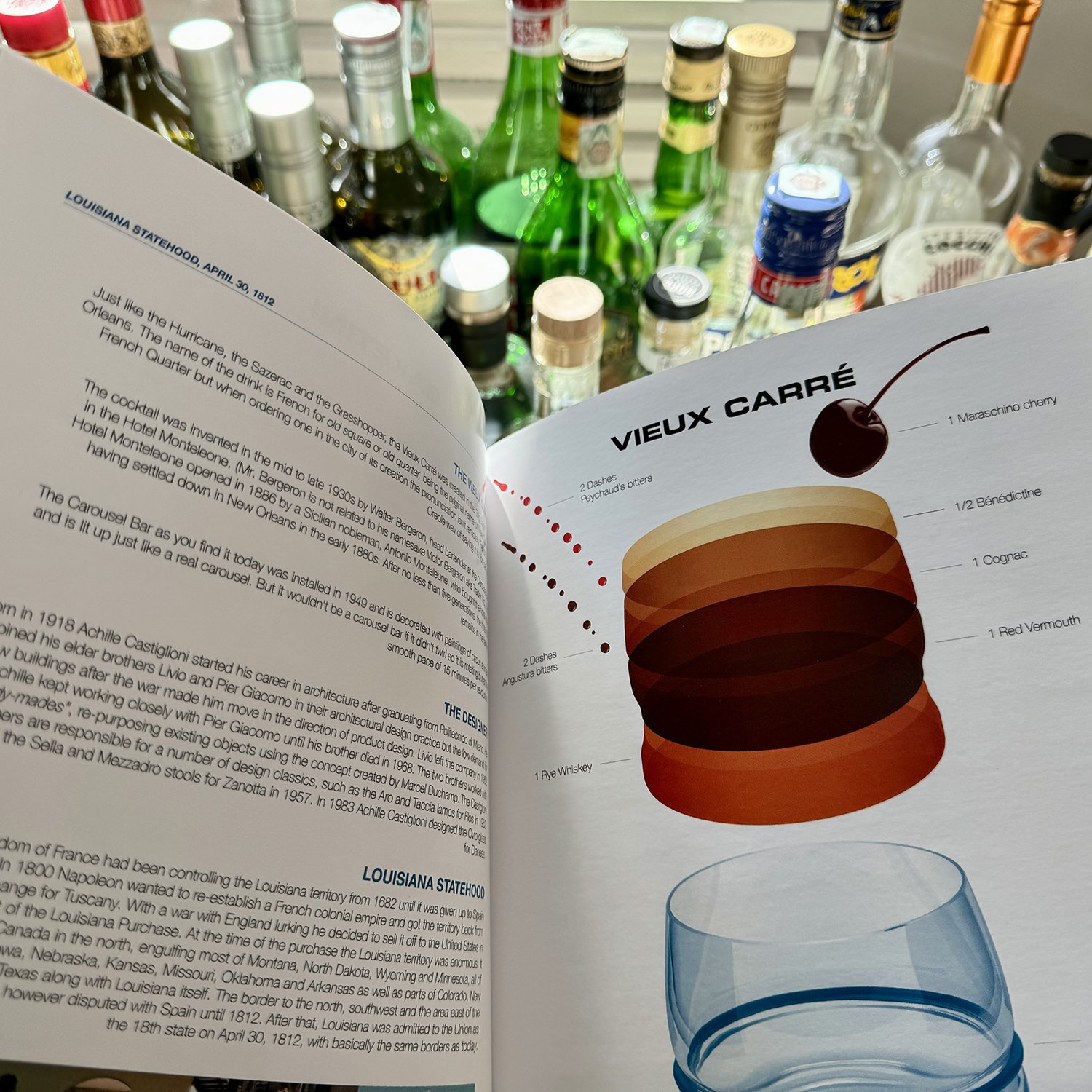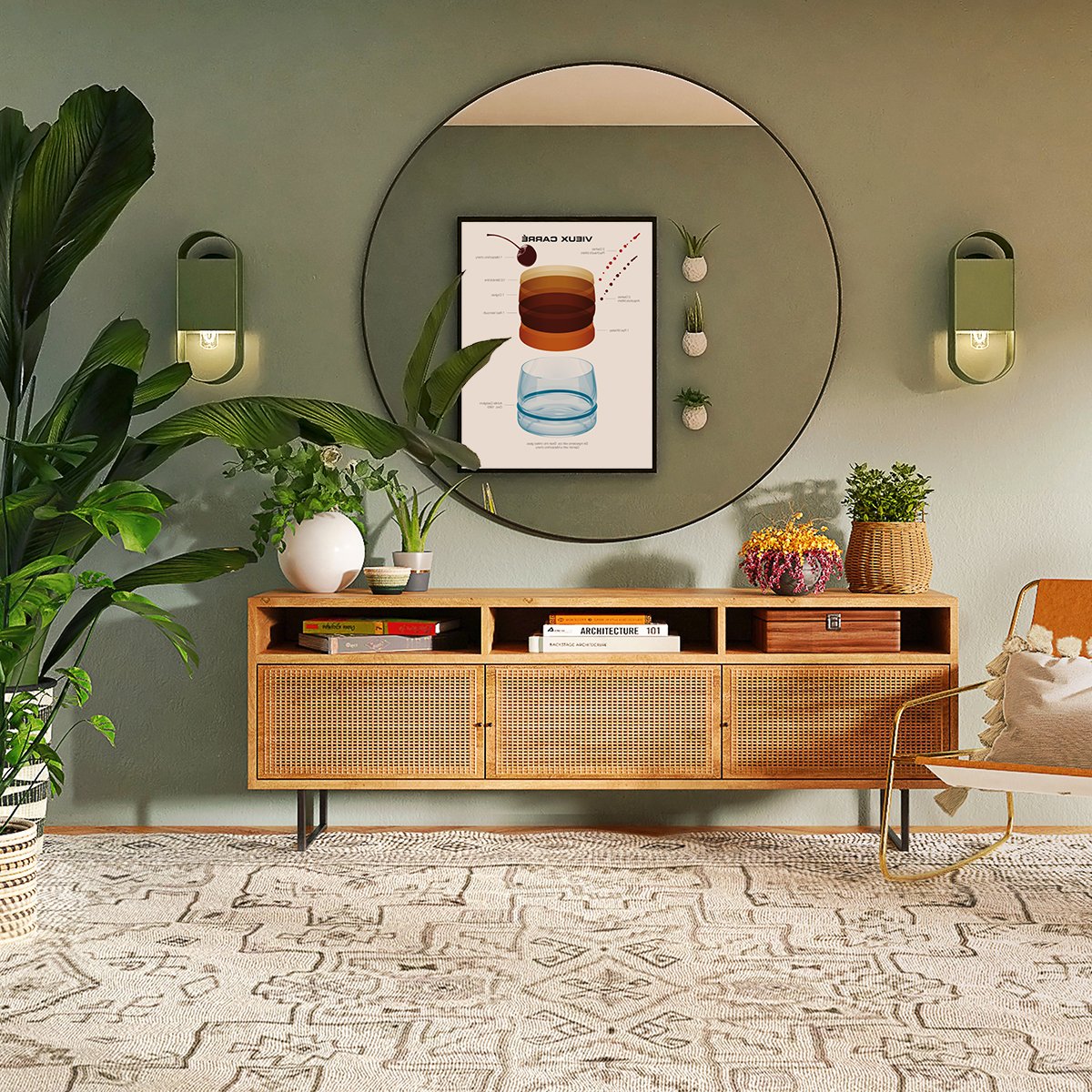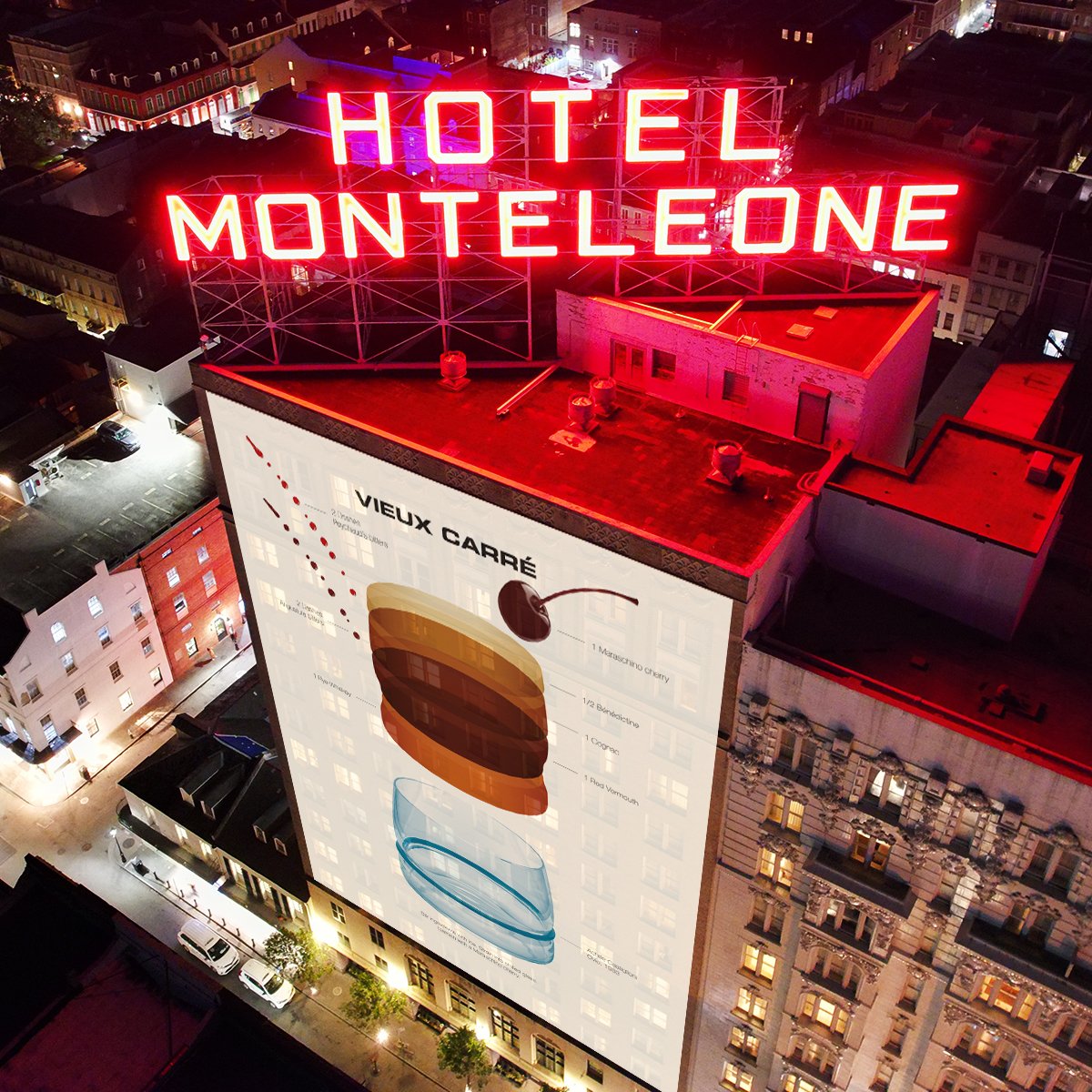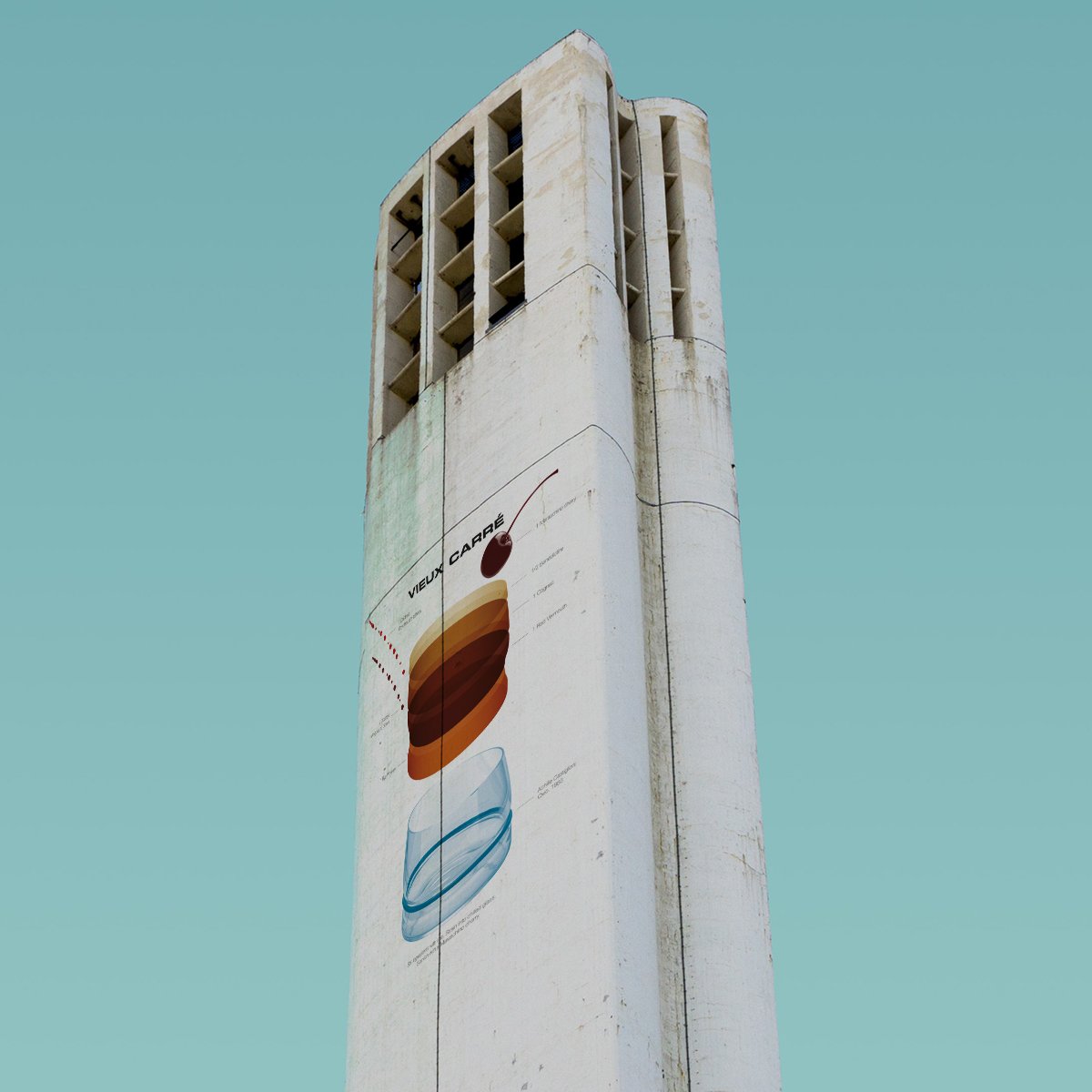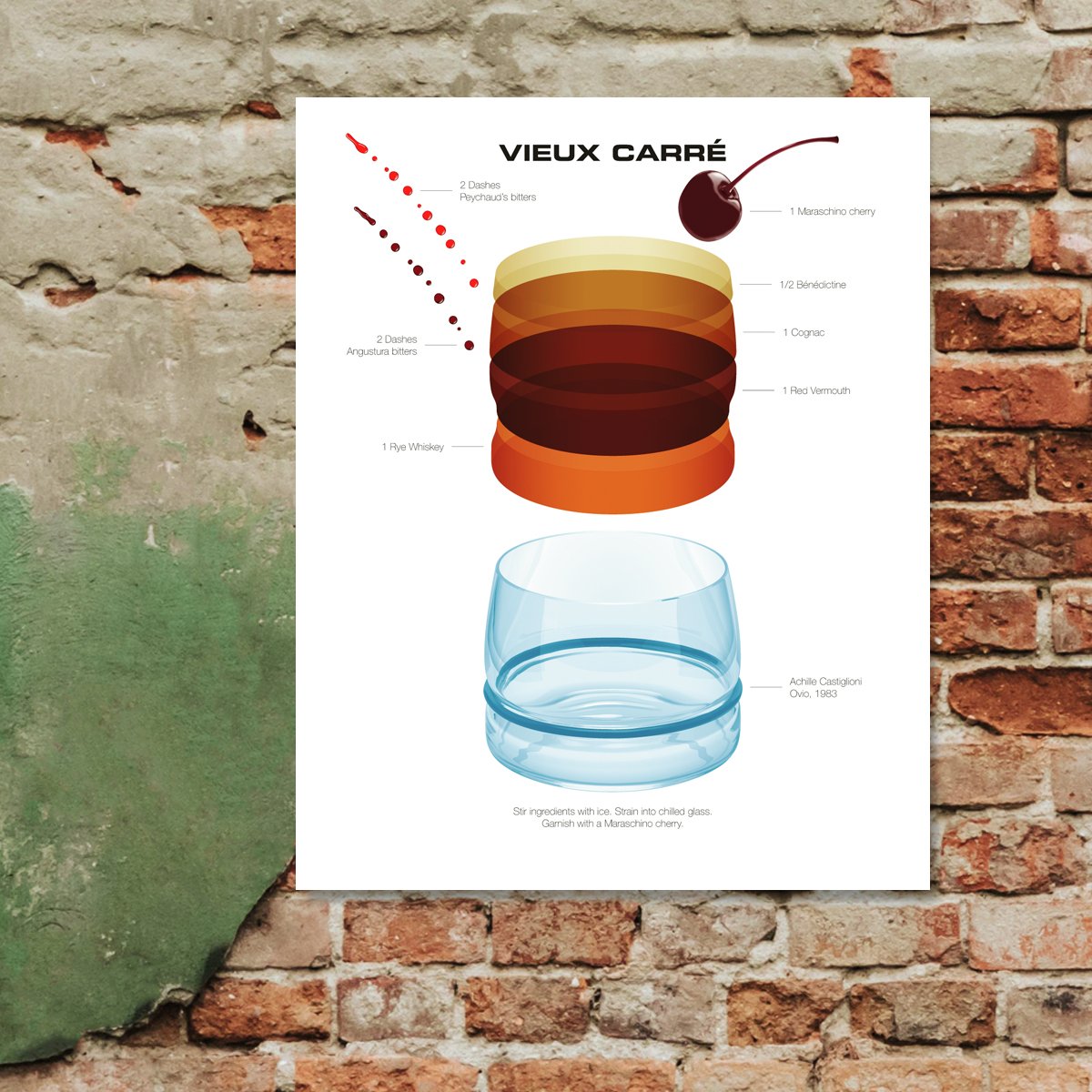The Kingdom of France had been controlling the Louisiana territory from 1682 until it was given up to Spain in 1762. In 1800 Napoleon wanted to re-establish a French colonial empire and got it back in exchange for Tuscany. With a war with England lurking he decided to sell it off to the United States in 1803 as part of the Louisiana Purchase. At the time of the purchase the Louisiana territory was enormous. It reached into Canada in the north, engulfing most of Montana, North Dakota, Wyoming and Minnesota, all of South Dakota, Iowa, Nebraska, Kansas, Missouri, Oklahoma and Arkansas as well as parts of Colorado, New Mexico and Texas along with Louisiana itself. The border to the north, southwest and the area east of the Mississippi were however disputed with Spain until 1812. After that, Louisiana was admitted to the Union as the 18th state on April 30, 1812, with basically the same borders as the present state.
THE VIEUX CARRÉ
Just like the Hurricane, the Sazerac and the Grasshopper, the Vieux Carré was created in the “Big Easy”, New Orleans. The name of the drink is French for old square or old quarter, being the original name of the New Orleans’ French Quarter. When ordering the drink the Creole way of saying it is Voo car-ray.
The cocktail was invented in the mid to late 1930s by Walter Bergeron, head bartender at the Carousel Bar in the Hotel Monteleone. The Hotel Monteleone opened in 1886 when a Sicilian nobleman, Antonio Monteleone, bought the hotel in the early 1880s. Still after five generations, the hotel still remains in the family. The Carousel Bar as you find it today was installed in 1949 and is decorated with paintings of circus animals and is lit up just like a real carousel, rotating at the smooth pace of 15 minutes per revolution.
Another New Orleans Original
This iconic New Orleans drink was created by a very unlikely bar owner. Mr. Henry C. Ramos was born in Indiana but started his career in a beer saloon in Baton Rouge. After some years he decided to buy a bar in New Orleans together with his brother and in 1887 they bought the Imperial Cabinet on Gravier Street. This was where Henry, or Carl to his friends, created the Ramos Fizz in 1888, originally the New Orleans Fizz.
The reason Mr. Ramos was such an unlikely bar owner was that he was a teetotaler and absolutely despised drunkenness. Everyday he walked around his bar talking to the customers to check their level of tipsiness and refusing to serve any more cocktails to intoxicated guests. To make absolutely sure that the Imperial Cabinet stayed a respectable establishment he only accepted the most well-behaved customers. For the same reason he closed the bar every evening at eight o’clock and kept the bar open for a mere two hours on Sundays afternoons and this only after he was talked into it.
Mr. Ramos also had strict rules for how his Ramos Fizz was made stating that it should be shaken for no less than 12 minutes. Since the drink was an instant success he had to keep 20 “shaker boys” making the Ramos Fizz on staff at any given time and even more during Mardi Gras. On October 27, 1919 the last Ramos Fizz was served and the doors of the Imperial Cabinet were closed due to Prohibition, something Mr. Ramos, as a teetotaler fully supported. The recipe remained a secret until he finally revealed it to a reporter from New Orleans Item-Tribune just days before his passing in 1928.
Ramos Fizz
2 parts Gin
1/2 part Lemon juice
1/2 part Lime juice
3/4 part Sugar syrup
1 part Crem
1 Egg white
2 dashes Orange flower water
1-2 parts Club soda
Shake all ingredients except soda without ice (dry shake), preferably 12 minutes. Add ice and shake again. Pour slowly into chilled glass. Add club soda to the shaker to get the remaining froth and pour slowly into glass.
A Mardi Gras Without the Parade
Nothing is as it used to be with the pandemic still raging around the world. The Mardi Gras parade is cancelled, the Carnevale di Venezia is online and the Carnevale in Rio is postponed indefinitely. What can you do to lighten the mood whilst waiting for the world to be vaccinated if not to make your own Sazerac and dream about celebrations to come.
The Sazerac is claimed to be the original cocktail was created in New Orleans in 1838 by an apothecary named Antoine Peychaud. He mixed up cognac, absinthe and his own herbal remedy he dubbed Peychaud's Bitters and served it in an egg shaped cup, in French called a coquetier. The Americans started calling the cup a cocktay and hence the word cocktail was born. The cognac Peychaud originally used was Sazerac de Forge & Fils but by 1870 the cognac was substituted for rye whiskey. In 2008 the Sazerac was voted New Orleans official cocktail.
The Revolution glass was designed by Felicia Ferrone in 2001.
Sazerac
1/4 part Absinthe of Herbsaint
1 sugar cube
2 daches Peychaud’s bitters
4 parts Cognac or Rye Whiskey
1 Lemon twist
Twirls Absinthe or Herbsaint to cover the inside of the glass, then discard. Muddle sugar and bitters. Stir sugar, bitters and Cognac or Rye with ice. Garnish with a lemon twist.

